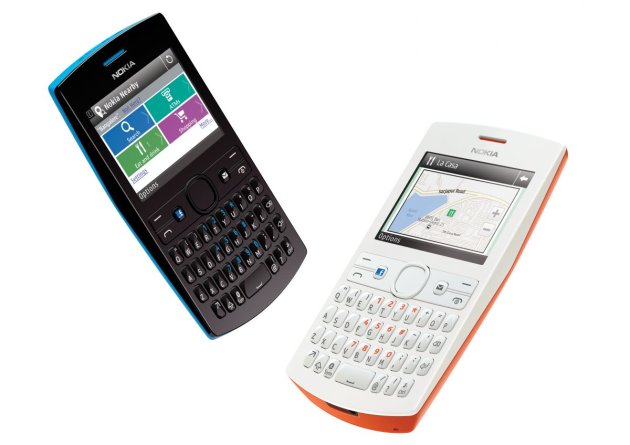Buying smartphones made simple - what you need (and what you don't)
Buying
a smartphone can be an overload of mystifying numbers such as screen
resolutions and processor speeds. Our guide explains what you need (and
what you don't).
 Recombu – Tue, Jan 15, 2013
Recombu – Tue, Jan 15, 2013
Buying a smartphone can be an overload of mystifying
numbers such as screen resolutions and processor speeds - delivered in
terms such as 1.4GHz and 1136x640.
Our guide explains what you
need (and what you don't) - modern mobiles pack more power and
functionality than the Apollo 11 space mission, so it can often be easy
to pay for functions you don't need.
Is a dual-core processor essential? Does screen resolution really matter? How about internal and expandable memory options?
Think
about what you use your phone for - if you just like to talk, more than
surf the net, opting for less power will likely bring down the price
without compromising your enjoyment and use.
Screen
The window to
everything you do on your phone, the screen is the crucial first
element. Think about size, resolution and display technology.
The
bigger the screen, the better your experience will be surfing the web,
watching video and checking photos. But the bigger the display, the
better the resolution needs to be or you could end up with pixelated
pictures and tough to read text. The end of 2012 saw the first Full HD
1080p phones unveiled with the likes of the ZTE Grand S and the HTC J
Butterfly, but any four-inch screen with an 800x480 pixel WVGA
resolution will be good enough.
There are also two types of
display technology widely available – battery-sapping LCD which offers
the best colour reproduction and brightness, and less power draining
AMOLED, which also offers improved black colour on screen.
Best
examples to compare the two come with the two most respected phones
currently available. The Apple iPhone 5 offers a 4-inch LCD Retina
display with 1136x640 resolution and 326 pixels per inch, while the
Samsung Galaxy S3 offers a 4.8-inch Super AMOLED display with 1280x720
resolution and 306 pixels per inch.
Cameras
Digital cameras are
as common on phones as screens, but with a huge variety of megapixel
ratings. While some mobiles go all the way up to double figures (the
Nokia 808 PureView offers 41 megapixels, more than most cameras), a
5-megapixel camera is more than good enough to shoot pics for printing,
posting online and adding to the family album.
Look too for
features such as autofocus, flash, face recognition, aperture ratings
and optical image stabilisers (particularly handy for shooting in low
light). Most offer video recording too, with Full HD 1080p now
commonplace. Panorama picture taking is also widely available, with the
phone automatically stitching shots together to create one seamless
wide-angle image.
Consider too a front facing camera if you like
to Skype chat. While these don’t need to be anywhere near the resolution
of the primary camera, anything around the 1.3Mp mark with a decent 30
frames per second (fps) video rating will be good enough for video chat.
Processor
The processor (or CPU) is a
phone’s brain, with top end smartphones featuring quad-core processors
and super high clock speeds (measured in MHz and GHz) that make them
powerful and fast.
For basic day-to-day use opt for a minimum
processor speed of 800MHz or preferably go for a single or dual core
processor - the latter will more than suffice for the majority of
people. If you love multiple apps, gaming and big media files then quad
core may be your best bet.
As with everything though, more power
means more money – for example the HTC One X+ features a quad core
1.7GHz CPU for around £400 while the Samsung Galaxy Ace features a
single core 800MHz CPU for around £120.
Storage
The
capacity available to store stuff on your phone is measured in MB and
GB, and is typically internal or available via an expandable SD card
slot. Although many manufacturers now offer cloud based storage too,
with your content available over the air without actually living on your
phone.
For modern needs, look for a minimum of 4GB storage,
which will allow for some extra capacity beyond that used up by the
phone’s essential functions. Make sure you check how much memory is
actually usable - some phones quote 16GB, but only 10GB is available to
use.
Capacity obviously varies according to file size but as a rough guide, 1GB will allow for around 170 MP3s and 500 photos.
Connectivity
The
primary point of a mobile phone is to be connected, and there are
myriad ways to do so. Every phone has network connectivity (allowing you
to make calls and send texts), which mostly now includes 3G for a
faster connection and the ability to send and receive larger files.
Just
emerged (and thus still very expensive) is 4G (LTE) connectivity, which
is up to five times faster than 3G and worth considering as a future
proofing option if you’ll hang on to your new phone for a while. WiFi is
of course commonplace and an essential money saving option for getting
online over your home network or public hotspots.
Then there’s
device-to-device connectivity such as Bluetooth, recently upgraded to
version 4.0 for fast wireless connection, and NFC, or Near Field
Communication, which is a quick and easy way to send files simply by
having two devices near each other.
The battery
A
simple but crucial element, your phone’s battery life can be key in
deciding which to go for. Typically a modern smartphone’s battery will
last around one day with moderate to heavy use, but the more powerful
the phone the bigger the battery needs to be to power it.
A quad
core mobile really needs at least a 2000mAh (milliamp hours) battery to
power the big CPU and large bright screen, while a less powerful single
or dual core will suffice with something around 1300mAh.
Operating system
There are four major operating systems that
make up 90 per cent of the mobile market – Android, iOS, BlackBerry and
Windows Phone. While they all offer similar functionality, they deliver
it in entirely different ways and the only real way to find out which
you prefer is to try them out. So don’t be afraid to visit a phone shop,
ask for one of each and have a play.
Bibliography
Reference Cited
BUYING SMARTPHONES MADE SIMPLE - WHAT YOU NEED (AND WHAT YOU DON'T) (2013)
[Online] Yahoo! News Network Available from:
http://uk.news.yahoo.com/buying-smartphones-made-simple---what-you-need--and-what-you-don-t---154223639.html [Accessed: 16 JAN 2013]
 IN_DEPTH_ Though often divided,
retailers, brands, factories and suppliers are more often than not in complete
agreement when it comes to the question of margins. There just seems to never
be enough of a profit to cover even basic costs, let alone invest in things
like better wages and improved worker safety. How can these essentials move
from “nice to haves” to “must haves”? And what are the actual costs that go
into producing a garment? Using the example of a pair of jeans, this next
installment in our sourcing series breaks down the expenses at each step.
IN_DEPTH_ Though often divided,
retailers, brands, factories and suppliers are more often than not in complete
agreement when it comes to the question of margins. There just seems to never
be enough of a profit to cover even basic costs, let alone invest in things
like better wages and improved worker safety. How can these essentials move
from “nice to haves” to “must haves”? And what are the actual costs that go
into producing a garment? Using the example of a pair of jeans, this next
installment in our sourcing series breaks down the expenses at each step. Bloomberg infographic “Ninety
cents buys factory safety in Bangladesh on 22 dollar jeans” looks at a 14-pound
(22.12 dollars) pair of George jeans, an Asda brand, a British Walmart
subsidiary, manufactured by the Sepal Group in Bangladesh and shipped by Hong
Kong-based trading group Li & Fung. Exactly 1.16 dollars is the factory’s
share, leaving - as the title implies - merely 90 cents to cover all their
operational expenses including wages and safety measures. The profit per jeans
is 0.26 dollars or 22.4 percent of the manufacturer’s share.
Bloomberg infographic “Ninety
cents buys factory safety in Bangladesh on 22 dollar jeans” looks at a 14-pound
(22.12 dollars) pair of George jeans, an Asda brand, a British Walmart
subsidiary, manufactured by the Sepal Group in Bangladesh and shipped by Hong
Kong-based trading group Li & Fung. Exactly 1.16 dollars is the factory’s
share, leaving - as the title implies - merely 90 cents to cover all their
operational expenses including wages and safety measures. The profit per jeans
is 0.26 dollars or 22.4 percent of the manufacturer’s share.
 Skinny jeans that fit perfectly to your curves... AEO introduce the spray-on ©AEO
Skinny jeans that fit perfectly to your curves... AEO introduce the spray-on ©AEO Spray on jeans, for when skinny's not enough
Spray on jeans, for when skinny's not enough